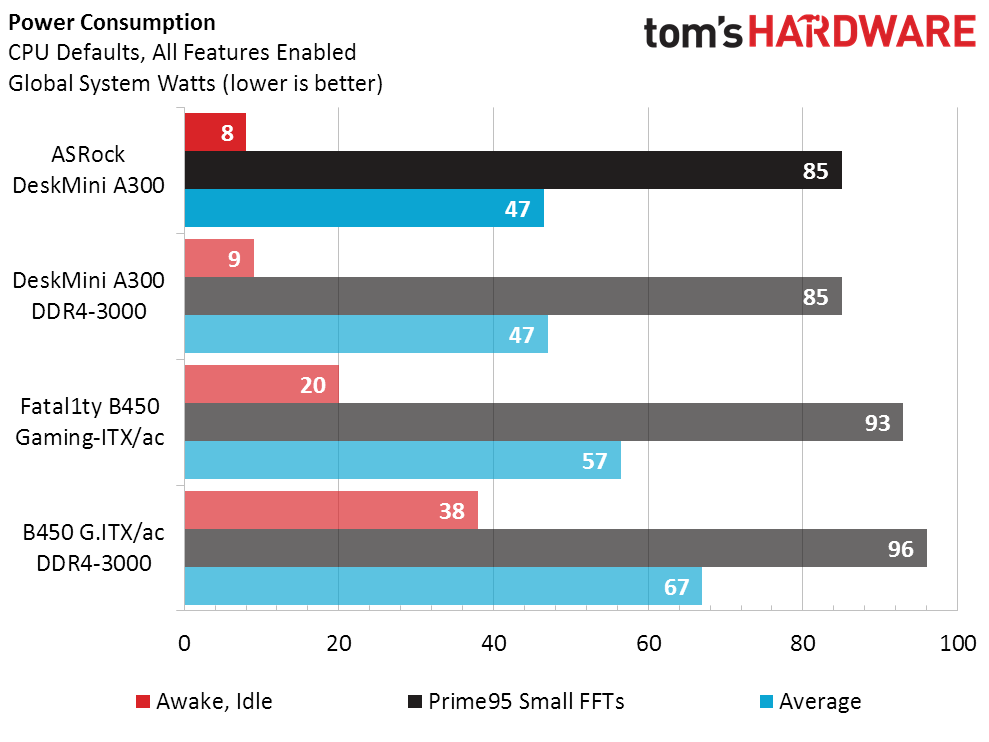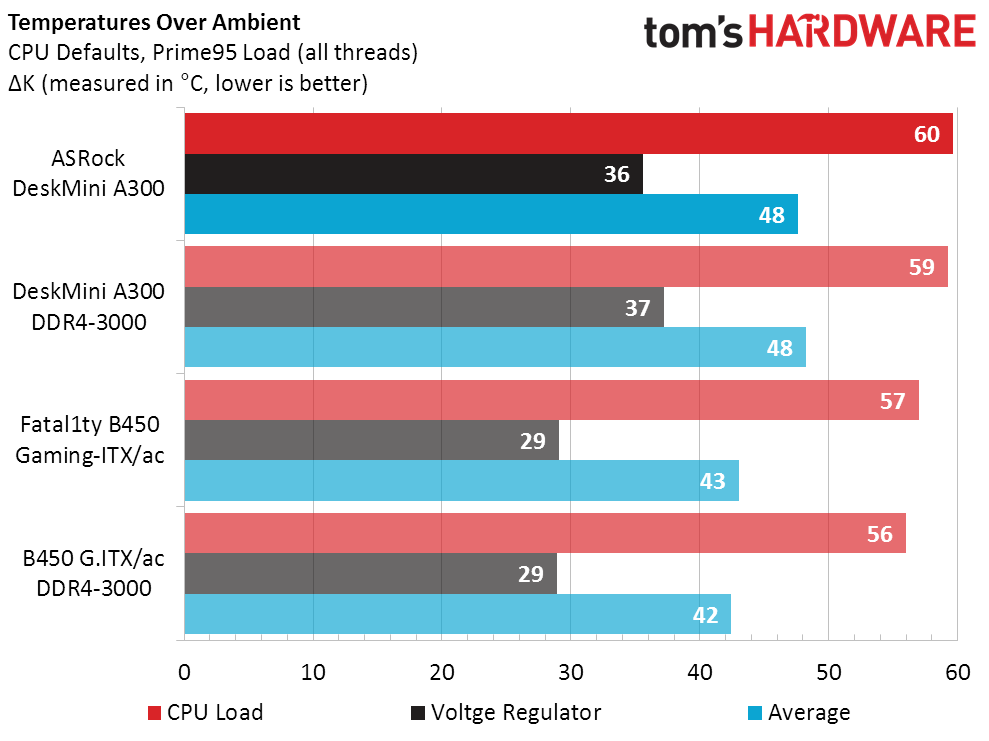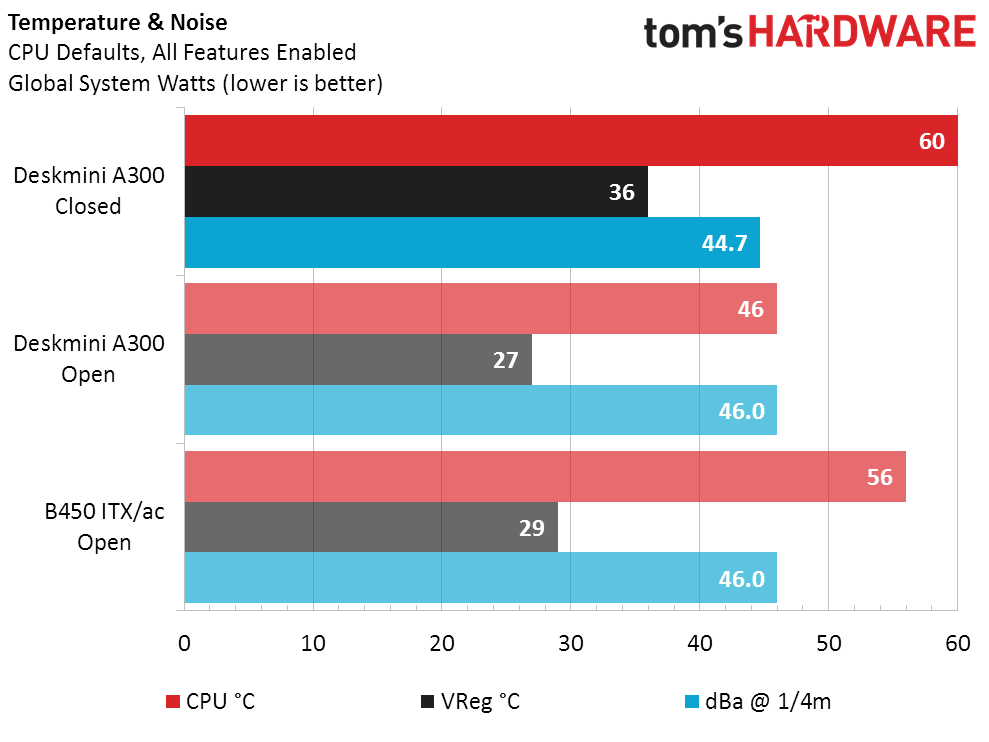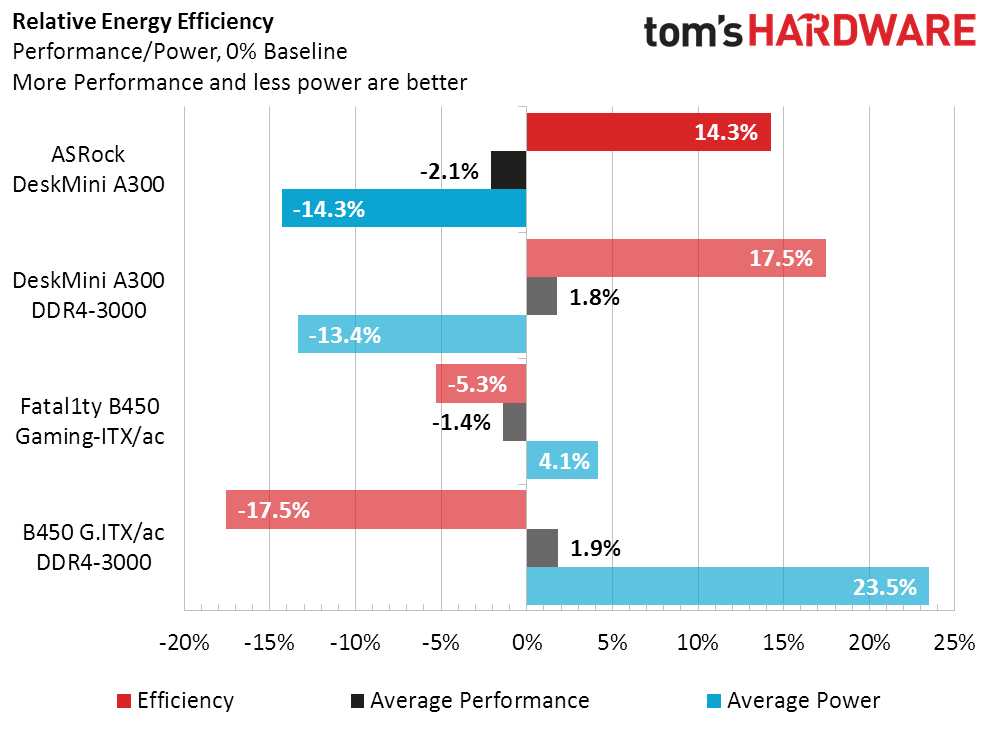ASRock DeskMini A300 Review: STX Meets AM4
Why you can trust Tom's Hardware
Benchmark Results and Final Analysis
We tested both boards at DDR4-2400 defaults, then enabled XMP and tested again. Since the comparison B450 Gaming-ITX/ac’s modules had tighter DDR4-2933 timings, it was then manually configured to match the DeskMini A300’s DDR4-3000 16-18-18-43 configuration.
Synthetic Benchmarks
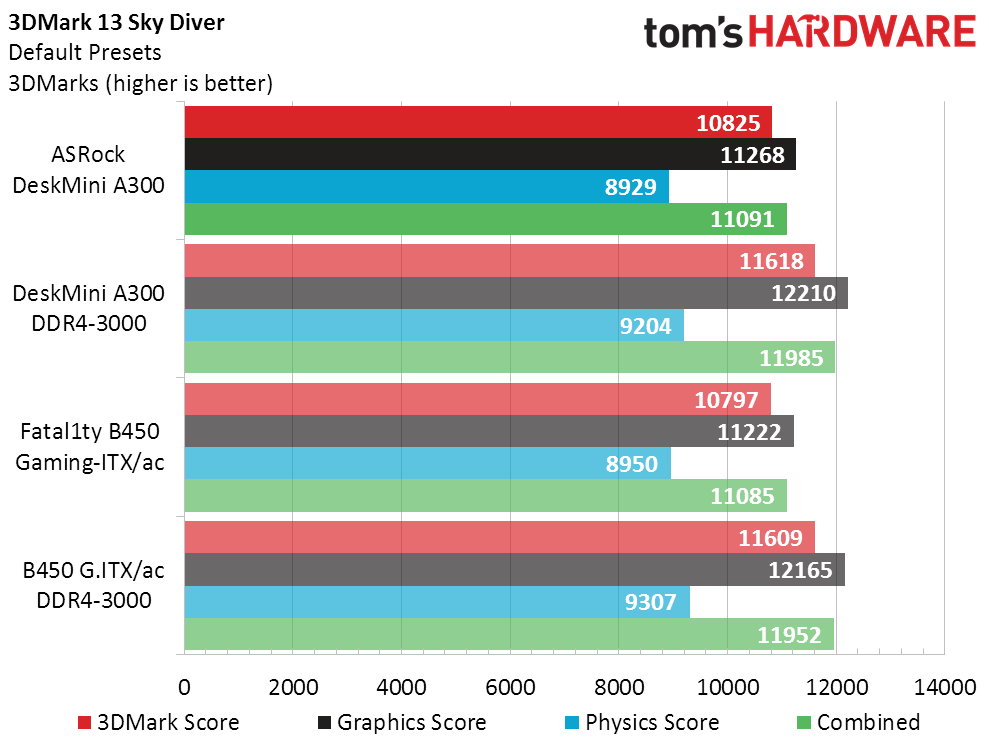
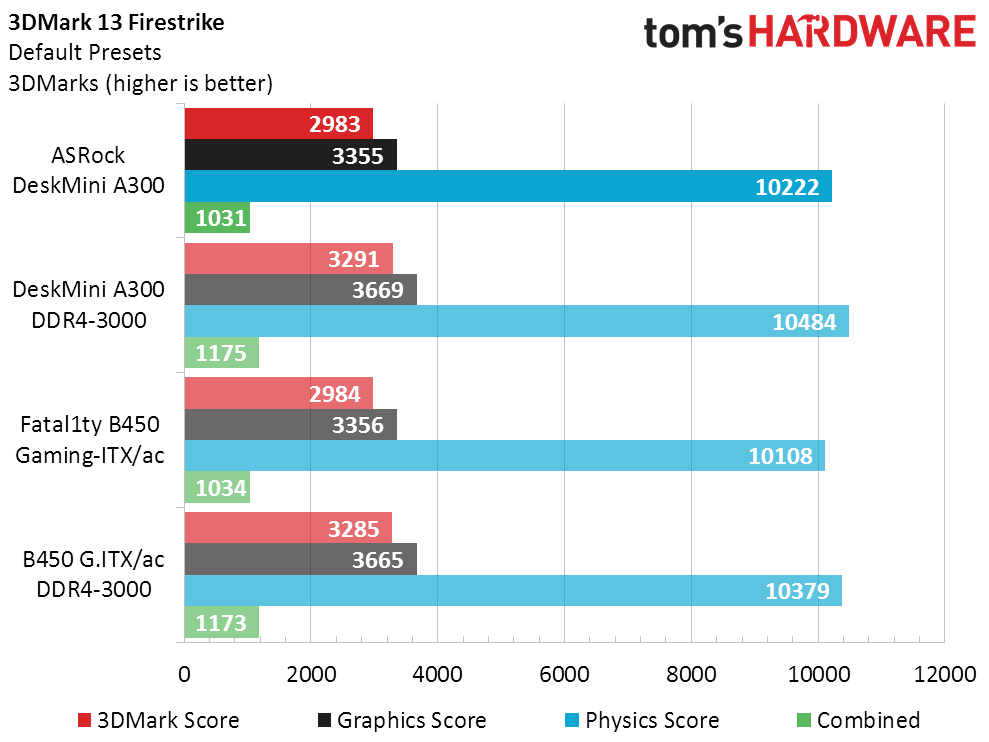
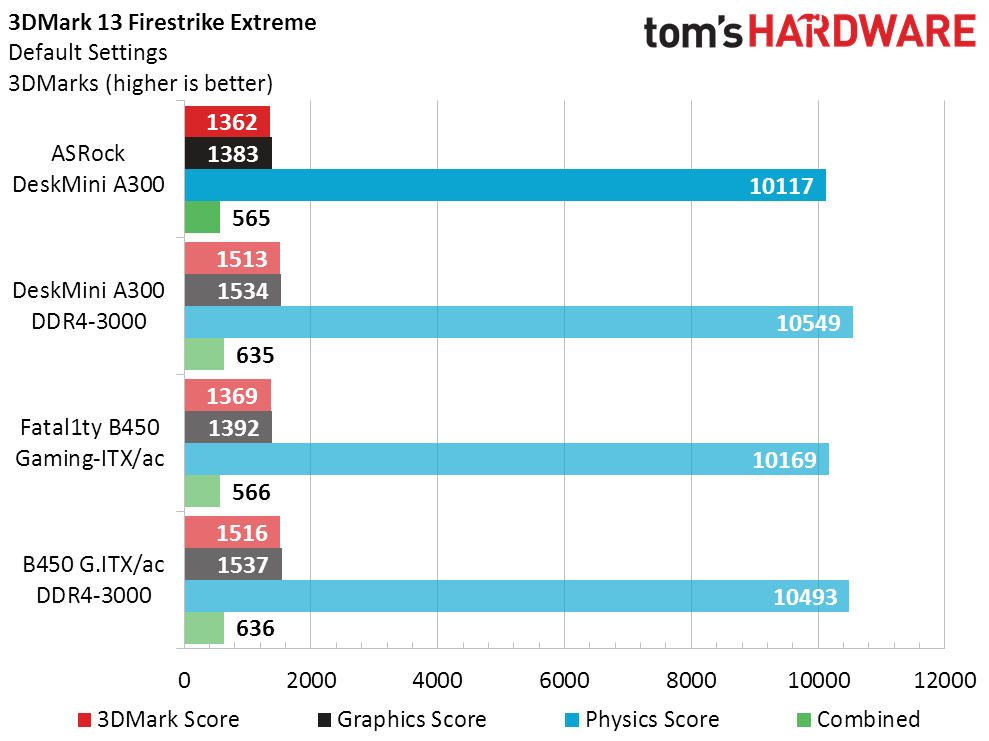
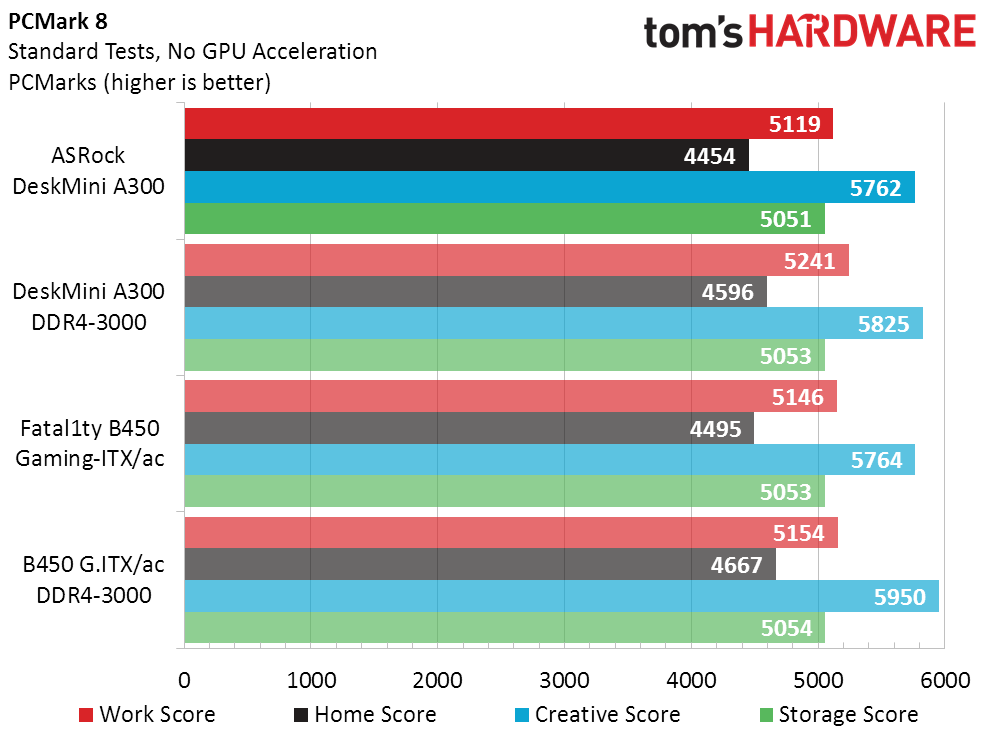
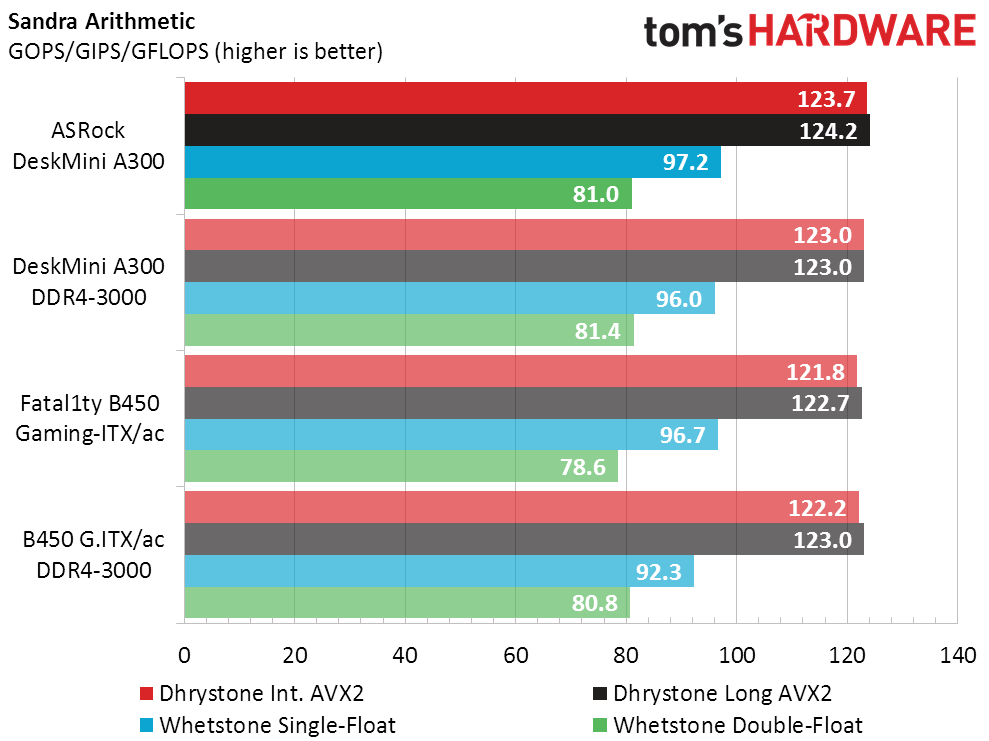
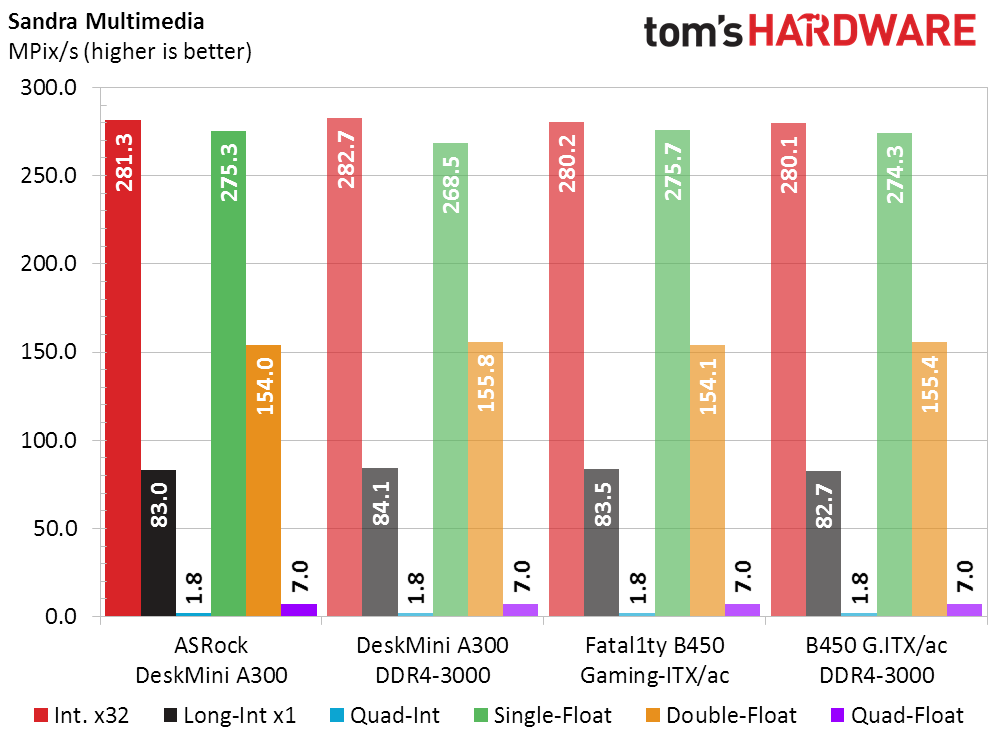
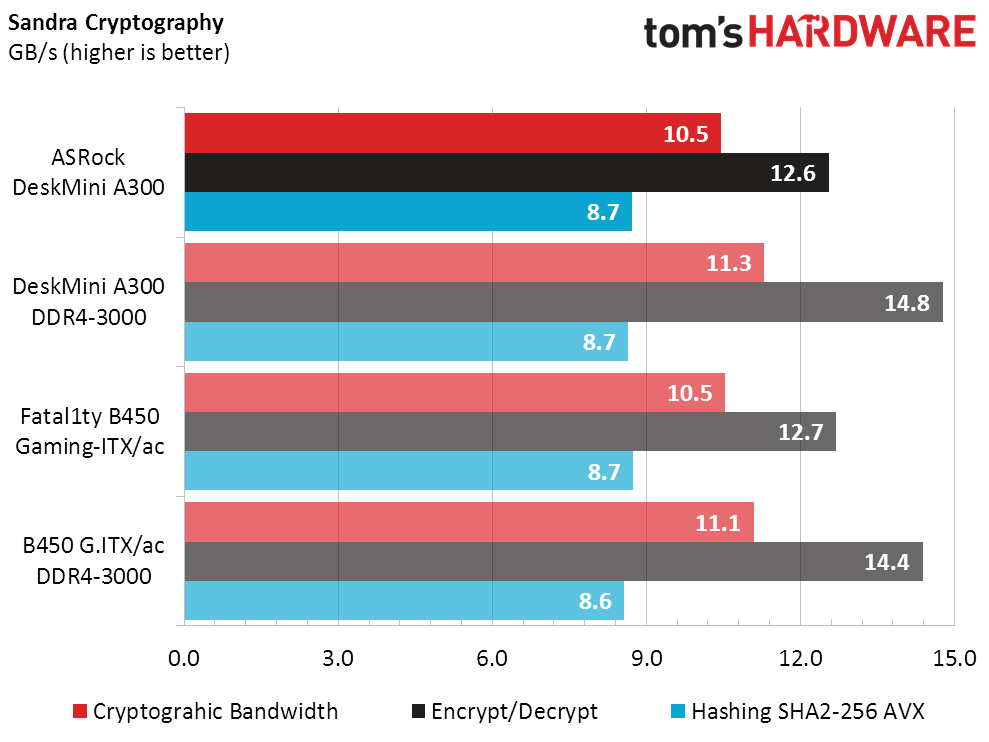
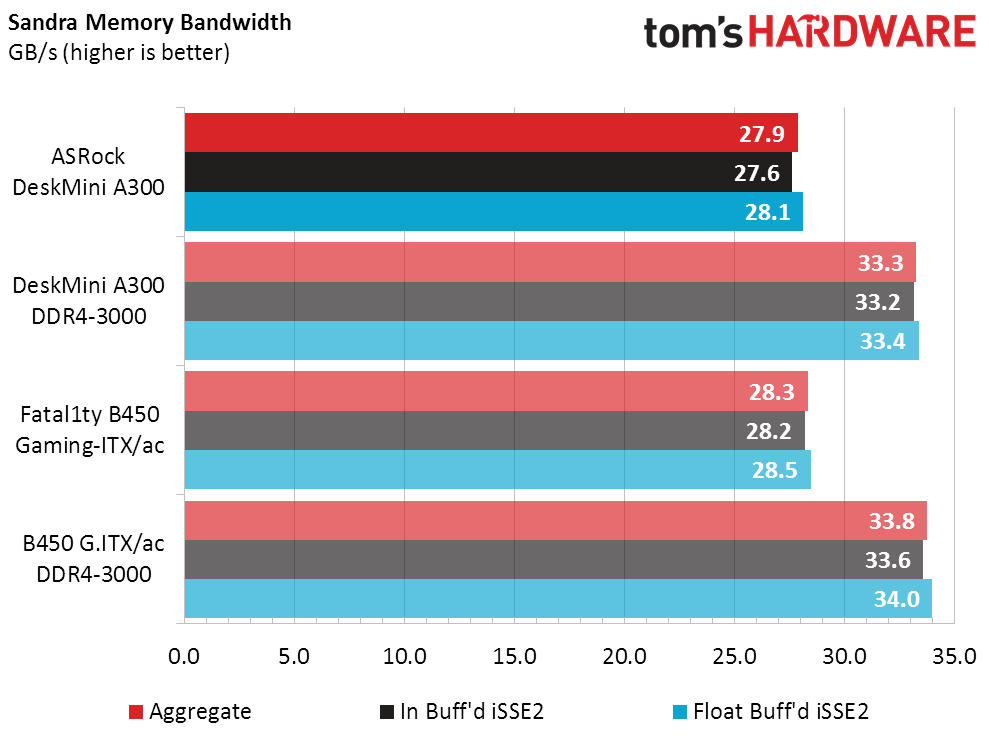
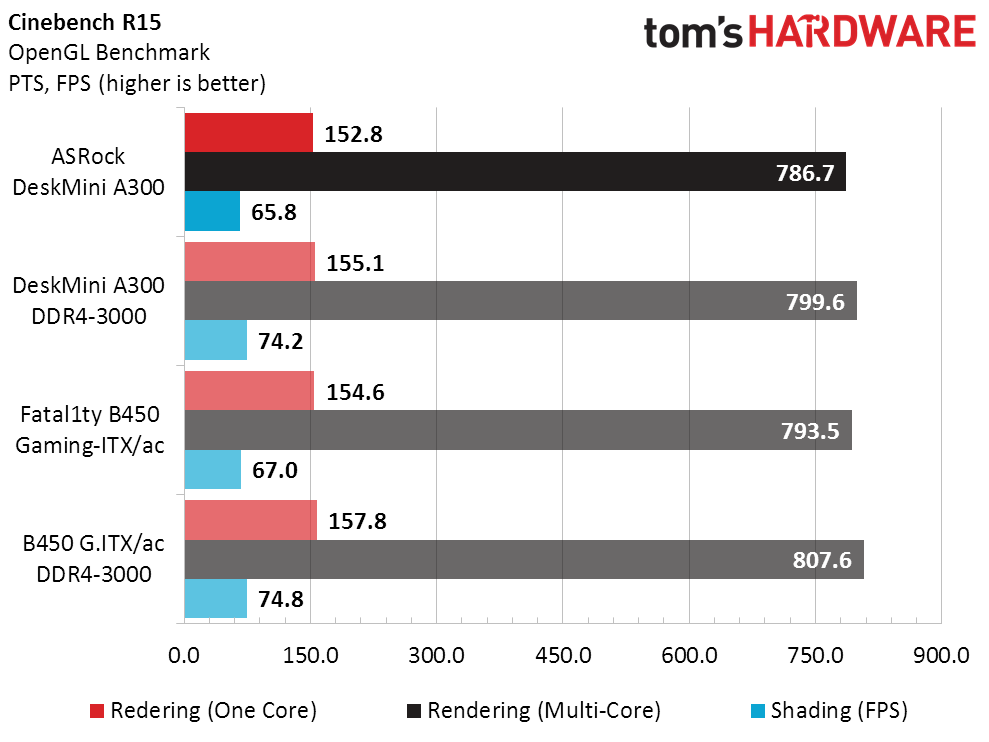

The DeskMini A300 and the B450 Gaming-ITX/ac run neck-and-neck through 3DMark at DDR4-2400, and again at DDR4-3000, with both showing noticeable improvements. Things also seem likewise competitive through a slew of Sandra tests and even Cinebench and Compubench, though the latter gets a bigger push from the faster memory setting. PCMark’s Creative score is the one place the B450 Gaming-ITX/ac stands out, but it’s difficult to determine the cause since nothing is askew in other tests.
3D Games
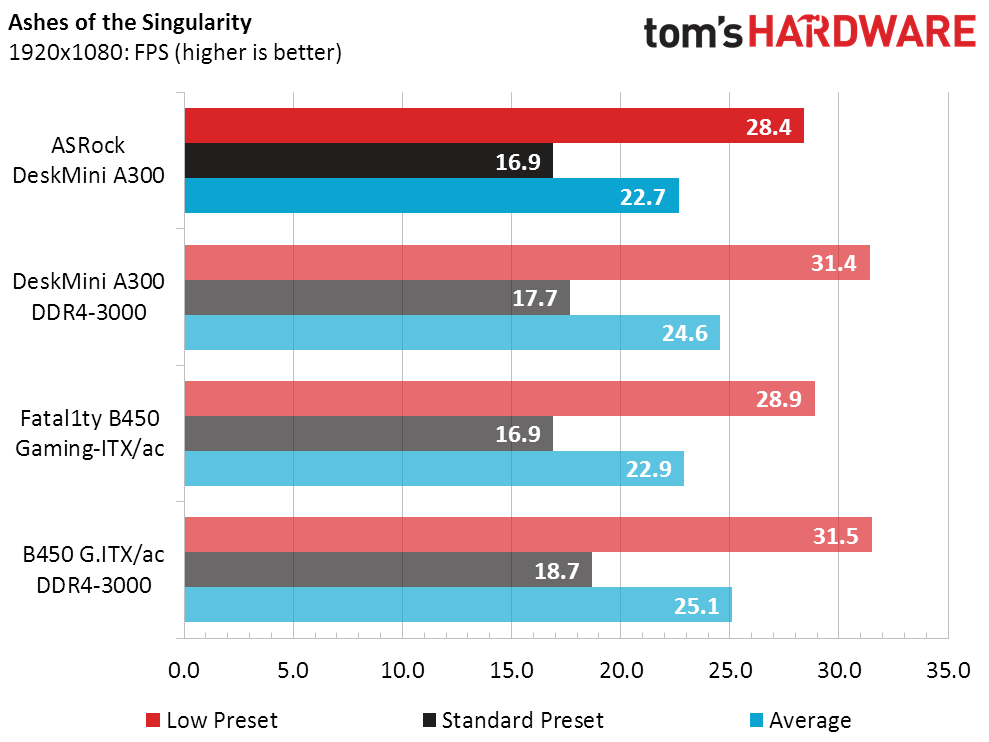
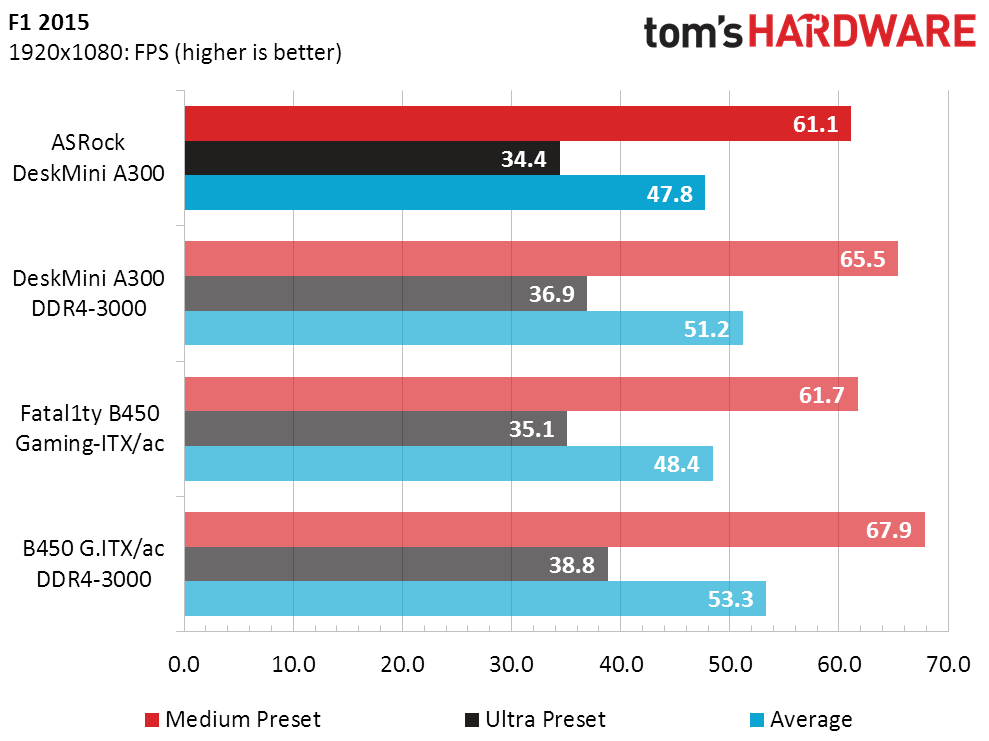

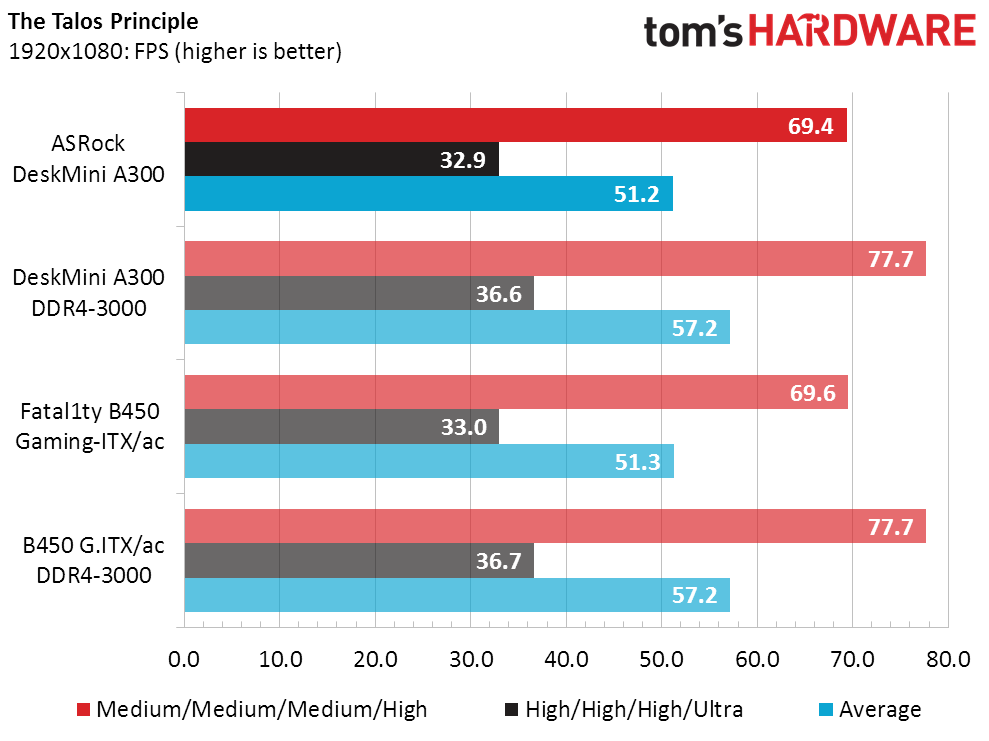
The B450 Gaming-ITX/ac gets a slightly better DDR4-3000 bump in F1-2015, which could indicate the use of better advanced memory timings. Performance differentiation in other games is insignificant.
Timed Applications
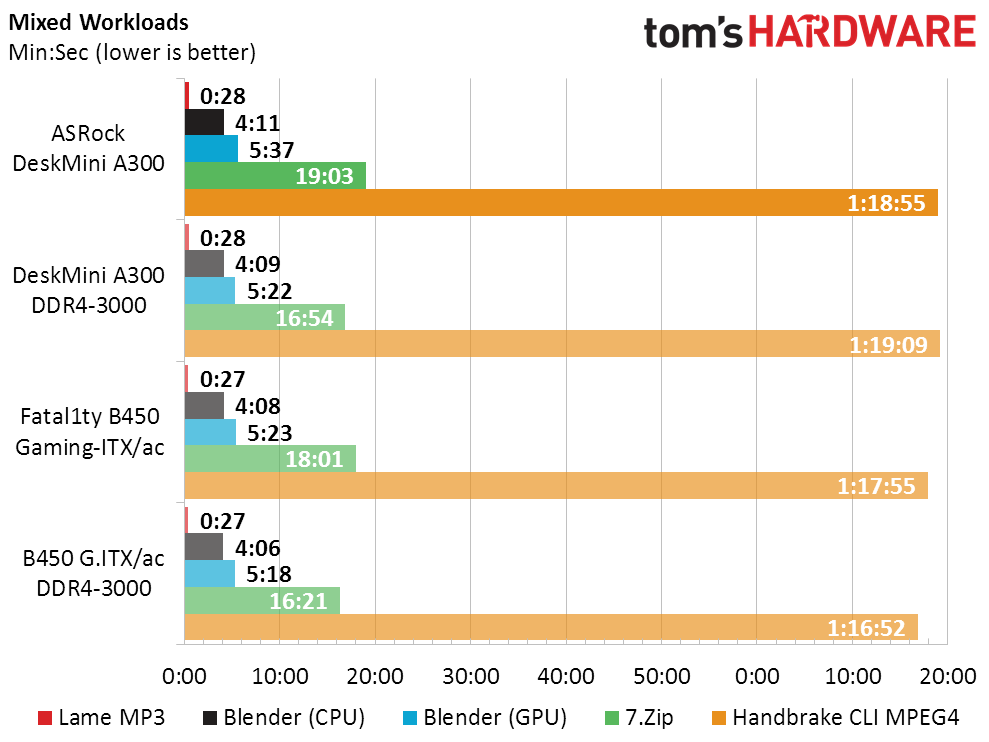
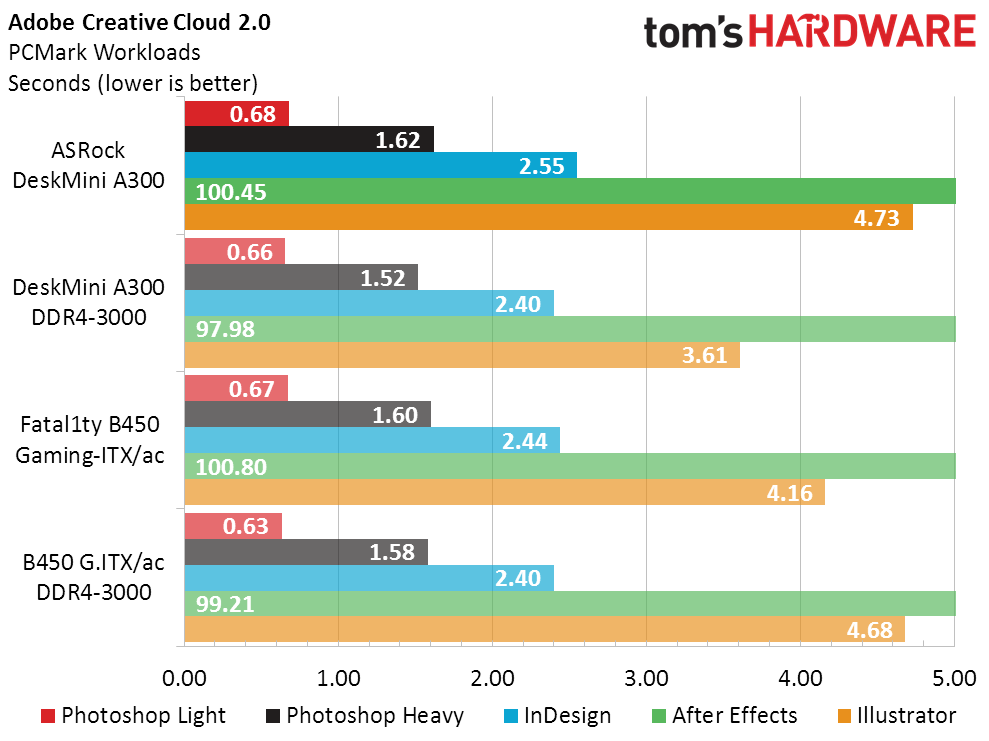
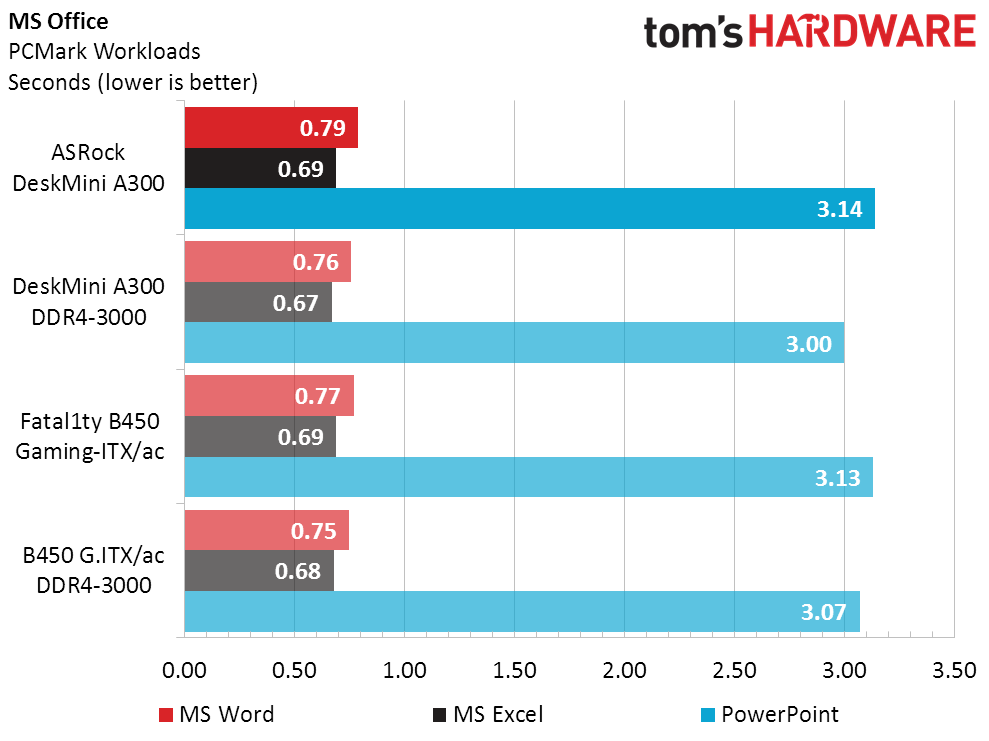
Less time means better performance in our non-gaming workloads, where the DeskMini A300 stands up to its Mini-ITX cousin in most metrics and even wins a few. The B450 Gaming-ITX/ac stands out in our longest tests, 7-Zip and Handbrake, and that combination likely indicates that it’s holding the CPU closer to its max frequency a little longer.
Power, Heat and Efficiency
The DeskMini A300 draws much less power than the B450 Gaming-ITX/ac, but the greatest problem with the bigger systems score is that it starts out with very poor idle power. While that could indicate a board that doesn’t make effective use of AMD’s power-savings, the tendency for inefficiency to taper off under higher loads is more likely indicative of its power supply having poor low-load efficiency.
Thermal measurements are impacted by the DeskMini A300’s small enclosure, so we took it out and measured temperatures a second time, in open air.
The open-air comparison doesn't help the B450 ITX/ac’s temperatures; they aren’t lower at all. Instead, we see that the CPU appears to pull more power when installed in the Mini ITX board, which is then turned into heat. So maybe the power supply chosen for that board isn’t so bad at low loads.
Get Tom's Hardware's best news and in-depth reviews, straight to your inbox.
Even with the smaller casing keeping the DeskMini A300 toasty under heavy loads, it draws far less energy than its larger cousin. Since performance differences were far smaller, the result is far greater efficiency. DDR4-3000 increased the DeskMini A300’s performance far more than its power draw, giving this configuration the greatest efficiency by a rather large margin.
Overclocking
Since the DeskMini A300 didn’t have the overclock settings of its B450 cousin, and since it couldn’t use the overclock settings it had for memory, we decided to see what we could do with the APU’s integrated Radeon RX Vega graphics instead. Remember from our firmware description that it topped out at 1500MHz, up 36% from the stock 1100MHz.
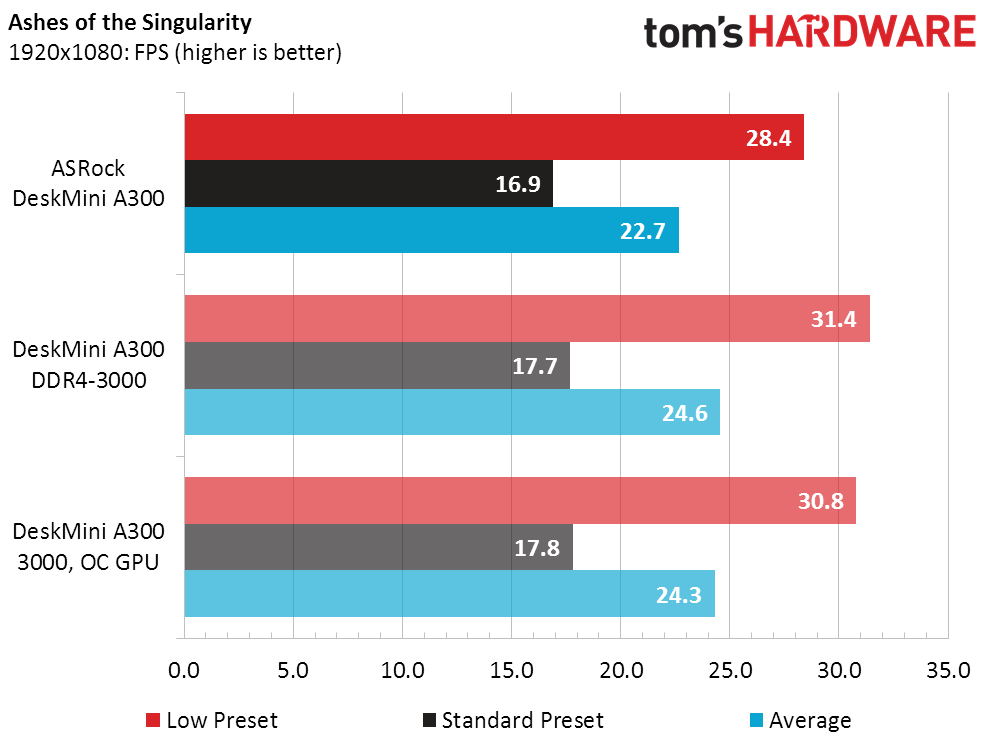
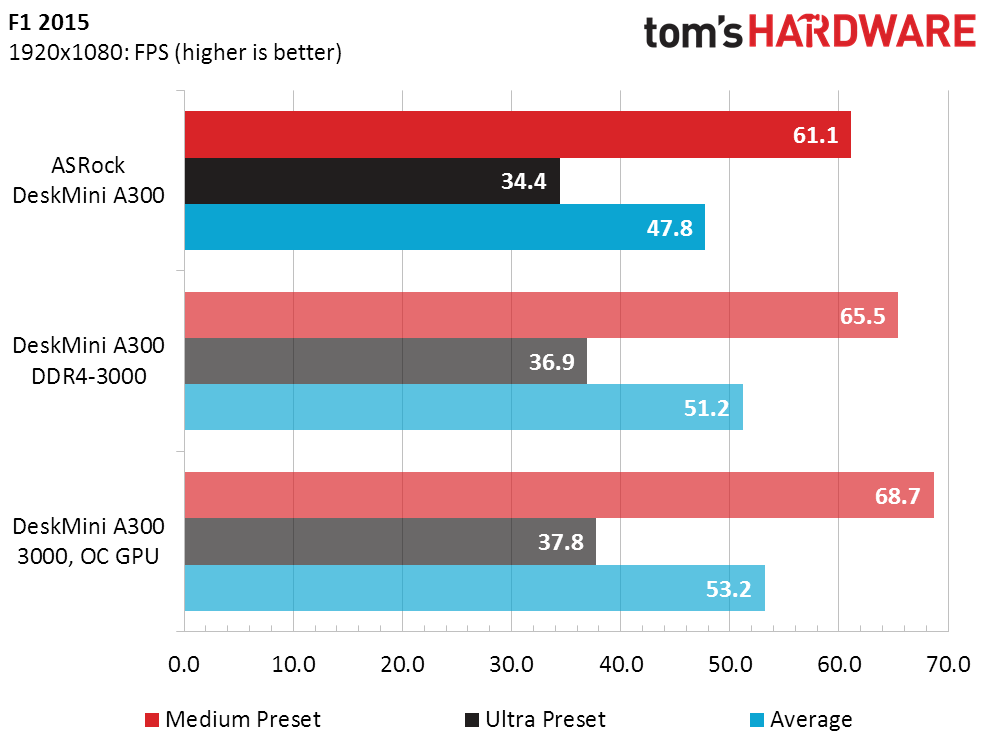
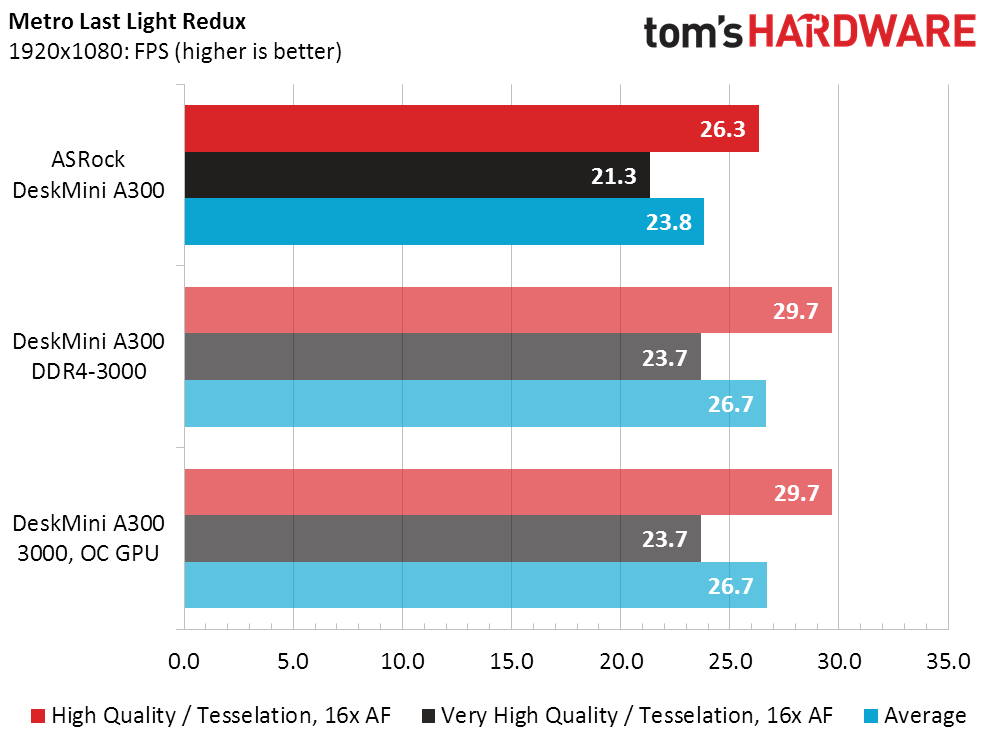
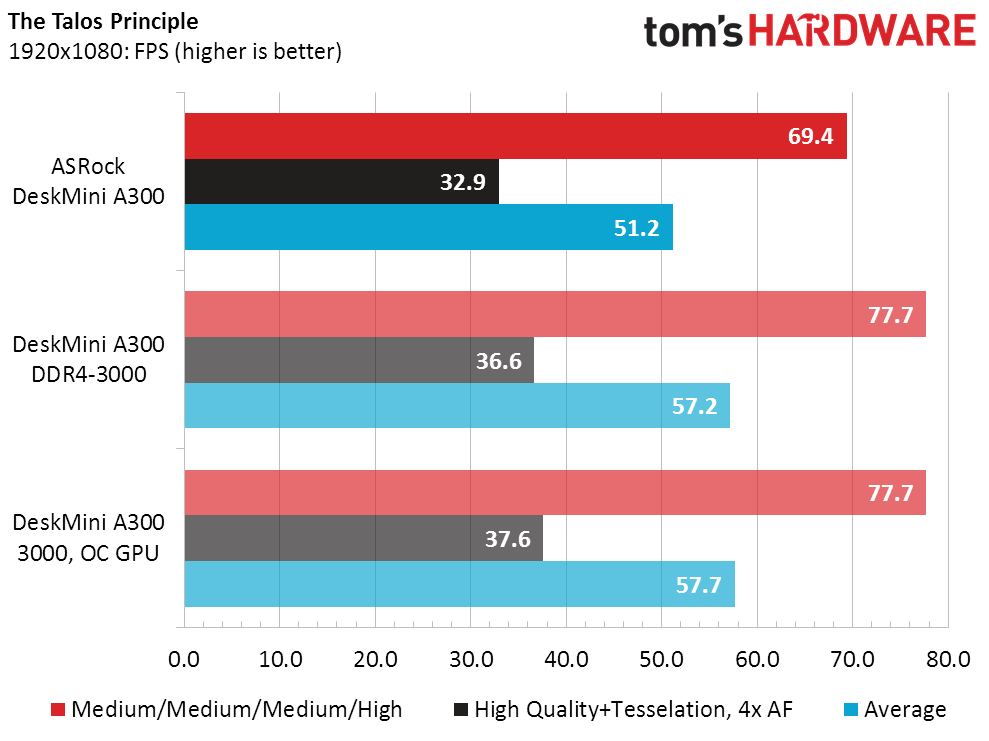
The one game and setting that least-needed the extra performance of an overclocked GPU got the most benefit from this experiment: F1 2015 at our Medium preset. Other benchmarks crave faster memory, which is rather unfortunate given the board’s inability to push any of our high-speed SODIMM memory past DDR4-3000.
In case you’re wondering, we didn’t have much luck overclocking the CPU on the B450 Gaming-ITX/ac either, though it did push its memory to the board’s DDR4-3466 setting at 1.35V, thereby increasing Sandra Memory Bandwidth from 33.8GB/s (DDR4-3000) to 38.9GB/s (DDR4-3466).
But What About Noise?
The DeskMini A300’s sole fan is the 70x15mm unit that came with its CPU cooler. Our meter read 46 decibels (A-weighted) at 1/4-meter, dropping only to 44.7 decibels when mounted inside the case. Subtract 12 decibels to get an approximate SPL for the industry-standard one-meter distance, and you’re looking at around 33db under heavy load. While systems like these rarely encounter a load high enough to force full fan RPM, that occasional high noise level could lead to occasional work disturbance.
Final Thoughts
Though it resembles something a store employee might use to check out paying customers, ASRock’s DeskMini A300 is designed for the improved performance and storage mandated by the consumer market. Unfortunately, the lack of any rear-panel audio jacks makes it more of a professional office system than a general purpose “home office” PC. The scarcity of rear-panel USB ports has a similarly negative impact on home users. Digital audio available through its integrated HDMI 2.0 support could instead make it an attractive set top box, but only if your loads are low enough to avoid turning its somewhat noisy fan up to eleven.
Photo Credits: Tom's Hardware
MORE: Best Gaming Desktops
MORE: How To Build A PC
MORE: All PC Builds Content
Current page: Benchmark Results and Final Analysis
Prev Page DeskMini A300 Firmware and Test Hardware-
scjhonson I have been seriously considering buying one of these. I have a Ryzen 5 2400g that I delided and applied liquid metal to, and the temperature improvements have been impressive. I wasn't able to squeeze any additional performance out of it, but it runs very, very cool now under stress testing using AIDA64, averaging 33 degrees C over ambient on the bench, overclocked to 3.95 GHz (@1.35v) on the CPU and 1575 MHz (@1.2v) on the GPU with a Noctua NH-L12S air cooler. Obviously, this cooler won't fit in the Deskmini A300, but I specifically delided this processor for this intended use and I am expecting only slightly less stellar temps even with a lesser cooler. I am just irritated that I won't be able to use my full overclock, plus it would be using slower memory than what I have on my bench build, so that is holding me back. I am still trying to decide if I want to build one of these...Reply -
neblogai Stock cooler (Wraith Stealth), which 2400G and 2200G come with, fits into the a300 once top shroud of the cooler is removed. It has better cooling capability (needed for full performance of the 2400G), and I think it is quieter too.Reply -
asmotan With the cooling solution for Deskmini A300, the following are the available options acknowledged in JP DIY community.Reply
Noctua NH-L9a-AM4This cooler fits perfectly in A300 like it was designed to do so.
It is considered to be the best cooling solution for this rig but the price may sound little high.
ID Cooling IS-40XThis cooler also fits great in A300 but the performance is slightly below NH-L9a-AM4 and the fan noise may become bothersome when the system goes full load.
Though pricewise, it's cheaper than Noctua.
AMD Wraith Stealth
Just as neblogai said, the stock cooler that comes with 2400G/2200G does fit by removing the shroud.
However, it depends on which model you have.
There happens to be 2 models, one with 7-fin fan and another with 5-fin fan.
The 7-fin fan model does fit by removing the shroud but with 5-fin fan model, it does not even by removing the shroud.
Though if you replace the stock fan with 80mm PWM case fan, the height will be lower than 45mm, which is a maximum height on A300, and will fit fine. -
scjhonson I am in the middle of bench testing thermals on a delid 2400g right now using a NH-L9a overclocked to 3.95 GHz (@1.35v) on the CPU and 1575 MHz (@1.2v) on the GPU. It is averaging 38 degrees over ambient on the bench with the NH-L9a, or about 5 degrees hotter than NH-L12S over a 3.5 hour run. Just for grins, I also ran a quickie bench test on a BeQuiet! Dark Rock Pro 4 which managed to average 25 degrees over ambient during a 30 minute run. Testing has me expecting about a 10 degree jump when I place this bench motherboard into my smallest case. Now that I have an idea what to expect, lets see what things look like when I plug the delid 2400g with NH-L9a combo into the Deskmini A300W (once Newegg finally gets them back in stock)...Reply -
TheTerk In case y'all are looking for fun projects for the A300, here's a link to my PS2 mod. https://www.youtube.com/playlist?list=PLAdxDLBaYJoYlcX0w9KjIwOjifR1pHGjiReply
